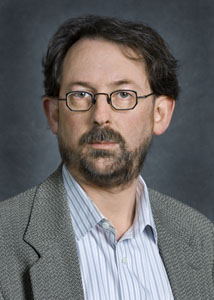

 Paul Adams, a senior scientist at Berkeley Lab, a bioengineering professor at UC Berkeley, and a leading authority on protein crystallography, has been appointed as Acting Director of Berkeley Lab’s Physical Biosciences Division (PBD) by Berkeley Lab Interim Laboratory Director Paul Alivisatos, effective immediately.
Paul Adams, a senior scientist at Berkeley Lab, a bioengineering professor at UC Berkeley, and a leading authority on protein crystallography, has been appointed as Acting Director of Berkeley Lab’s Physical Biosciences Division (PBD) by Berkeley Lab Interim Laboratory Director Paul Alivisatos, effective immediately.
Adams has been serving as PBD’s deputy director since 2007. He also heads the Berkeley Center for Structural Biology, which operates five protein crystallography beamlines at the Advanced Light Source, and serves as Vice President for the Technologies Division at the Joint BioEnergy Institute, a U.S. Department of Energy Bioenergy Research Center that is led by Berkeley Lab.
After receiving his B.Sc. and Ph.D. at Edinburgh University, Adams spent seven years researching crystallographic and computational modeling at Yale University, where he was one of the principal developers of the Crystallography and NMR System package that has been a mainstay of structural biology for the last decade. In 1999, he came to Berkeley Lab to start a new group developing modern tools for structural biology.
Adams’ research has been central to the development of new algorithms and computational methods for addressing problems in structural biology. He leads the NIH-funded PHENIX collaboration developing new software for the automated solution of macromolecular structures using crystallographic methods. He is also heavily involved with research at Los Alamos National Laboratory to develop new methods for the analysis of neutron diffraction data. As part of an NIH-funded nanomedicine center he has been applying structural biology methods to engineer solutions to diseases related to protein folding. In addition, he is leading an effort at the Energy Biosciences Institute, a BP-funded bioenergy research led by UC Berkeley and including Berkeley Lab, to create a high-resolution chemical map of plant cell walls, details of which will allow researchers to visualize the chemical and physical obstacles to the breakdown of these walls for the production of biofuels.
Adams is the author of more than 80 papers, book chapters and review articles. His many awards include Berkeley Lab’s Outstanding Performance Award (2004), Berkeley Lab’s Technology Transfer Award (2003), and the Upjohn Prize for Biochemistry (1988).
For more information about Adams visit his website or his Physical Biosciences profile page.